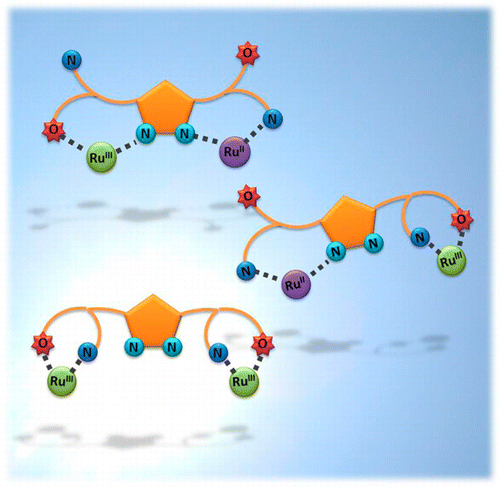Three dinucleating Ru–Cl complexes containing the hexadentate dinucleating ligand [1,1′-(4-methyl-1H-pyrazole-3,5-diyl)bis(1-(pyridin-2-yl)ethanol)] (Hpbl) and the meridional 2,2′:6′,2″-terpyridine ligand (trpy) have been prepared and isolated. These complexes include {[RuCl(trpy)]2(μ-pbl-κ-N3O)}+ (1a+), {[RuCl(trpy)]2(μ-Hpbl-κ-N3O)}2+ (1b2+), and {[RuCl(trpy)]2(μ-Hpbl-κ-N2O2)}2+ (1c2+) and were characterized by analytic and spectroscopic techniques. In addition, complexes 1b2+ and 1c2+ were characterized in the solid state by monocrystal X-ray diffraction analysis. The coordination versatility of the Hpbl ligand allows the presence of multiple isomers that can be obtained depending on the Ru oxidation state and were thoroughly characterized by electrochemical techniques, namely, cyclic voltammetry and coulometry. Finally, 1a+ and its recently reported mononuclear analogue, in-[RuCl(Hpbl)(trpy)]+, have been tested as catalysts for epoxidation of cis-β-methylstyrene.
